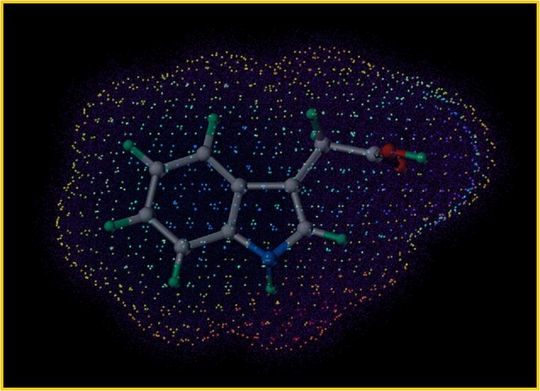
一国际小组的研究人员历时75年在了解非常重要的植物激素的进程上取得另一个重大突破。这个研究小组成员来自于里昂大学,诺丁汉大学,根特大学和利兹大学,小组成员发明了一种传感器,首次让植物组织里的植物激素可视化。他们的研究成果发表在2012年1月15日出版的权威学术杂志Nature上,文章具体介绍了科学家如何用传感器来监测模式植物拟南芥。
植物和动物一样,有激素调控它们的生长和发育。植物激素可以影响植物的生长形状,促使番茄成熟,树叶落下和根向下生长。植物激素是植物生长发育所必需的,在植物生命周期中对许多生长和行为协调过程起重要的作用。
研究人员发明的这种名为DII-VENUS的新型传感器可以监控激素的剧烈变化,而且让研究人员几乎实时地观测到发育反应过程中激素的重新分配。研究结果发现组织中植物激素的种类比之前预想的要复杂的多,这就表明对组织中激素的敏感度准确的控制着它们反应的能力。
Malcolm Bennett是生物科学院植物科学的教授和植物整合生物学中心(CPIB)的生物主任,他说:“这个传感器预示着非常重大的进步,因为几乎每种植物的生长发育过程都是由植物激素调控的,从胚芽形成,到调控树叶和树根生长,甚至是花朵的形状。应用传感器可以准确地知道激素在植物组织积累的部位,积累的时间, 这有助于我们创造出新形状、体积和性状的植物。
法国科学研究中心的Dr. Vernoux说,我们现在可以在生长的组织里看到植物激素。这对了解激素在植物发育过程的作用来说是极大的进步。

A novel sensor to map auxin response and distribution at high spatio-temporal resolution
Géraldine Brunoud, Darren M. Wells, Marina Oliva, Antoine Larrieu, Vincent Mirabet, Amy H. Burrow, Tom Beeckman, Stefan Kepinski, Jan Traas, Malcolm J. Bennett & Teva Vernoux
Auxin is a key plant morphogenetic signal1 but tools to analyse dynamically its distribution and signalling during development are still limited. Auxin perception directly triggers the degradation of Aux/IAA repressor proteins. Here we describe a novel Aux/IAA-based auxin signalling sensor termed DII-VENUS that was engineered in the model plant Arabidopsis thaliana. The VENUS fast maturing form of yellow fluorescent protein was fused in-frame to the Aux/IAA auxin-interaction domain (termed domain II; DII)5 and expressed under a constitutive promoter. We initially show that DII-VENUS abundance is dependent on auxin, its TIR1/AFBs co-receptors and proteasome activities. Next, we demonstrate that DII-VENUS provides a map of relative auxin distribution at cellular resolution in different tissues. DII-VENUS is also rapidly degraded in response to auxin and we used it to visualize dynamic changes in cellular auxin distribution successfully during two developmental responses, the root gravitropic response and lateral organ production at the shoot apex. Our results illustrate the value of developing response input sensors such as DII-VENUS to provide high-resolution spatio-temporal information about hormone distribution and response during plant growth and development.
文献链接:https://www.nature.com/nature/journal/vaop/ncurrent/full/nature10791.html








